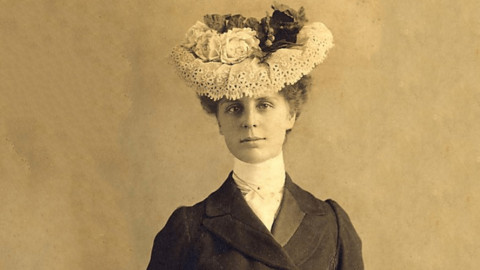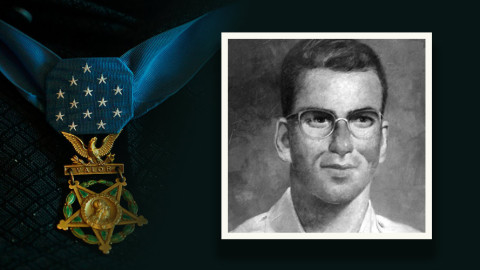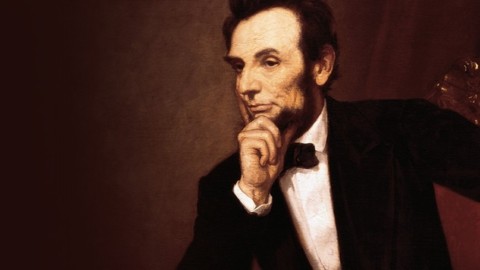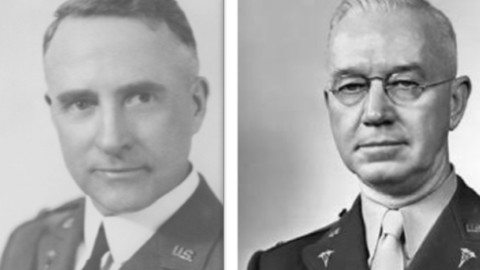Dental Clinic Memorial. The Robert T. Oliver Memorial
By John E. King, COL (Ret)
History surrounds you. Chances are likely that if you practice dentistry in the Army you do it in a memorial, in remembrance of someone you would probably admire, even hope to be like. The purpose of this paper is to raise awareness of the Army’s program to remember those who have distinguished themselves by meritorious service to soldiers and our nation. A second purpose is to introduce you to, or remind you of, a champion of Army dentistry who played essential roles in the establishment of the Army dental care system. The dental clinic memorialized in the name of Robert T. Oliver at Fort Jackson, SC is one example of about 45 named U. S. Army dental clinics.
The information about this distinguished member of Army dentistry’s history was excerpted primarily from the book A History of Dentistry in the United States Army to World War II written by three excellent historians: John Hyson, Joseph Whitehorne and John Greenwood.(1) Army dentistry owes much to these gentlemen for capturing in a single source the first 166 years if the history of dental care in the U.S. Army.
Dental Clinic Memorial.
Walk into the dental clinic at 4323 Hill Street, Fort Jackson, SC 29207 and you will notice the clinic is named for Robert Todd Oliver. Why? Wouldn’t it be easy to refer to it as Dental Clinic #1? Maybe it would but the soldiers of Army dentistry and medicine have chosen to honor one of our own. The act of bestowing such an honor is referred to in Army Regulation 1-33 as memorialization.(2) This building is the Robert T. Oliver Memorial. According to Merriam-Webster Online Dictionary a memorial serves to preserve remembrance.(3) We of the Army dental care system honor Colonel Oliver by performing our mission in this memorial building. Starting more than 100 years ago Oliver struggled for many decades to establish an oral health care infrastructure that survives today in this clinic, other Army facilities and at deployed locations. Certainly we want to remember more than just his name. If you are at Fort Jackson you would be able to find information specifically about how he distinguished himself and why we should be proud to be part of his professional heritage. Even if you never visit Fort Jackson you should still know about this champion of our mission.
Legacy.
Robert T. Oliver labored for all of us to build a strong foundation for military dentistry. The proof of Colonel Oliver’s importance to the heritage of Army dentistry is apparent from accomplishments when he was the third Chief of the U.S. Army Dental Corps (1919 – 1924) . By his actions the level of autonomy of dental operation and dentistry’s position in the hierarchy of the Army Medical Department’s organization was elevated.(4) This was only an end result of a career of successes at putting together pieces of an effective organization.
Doctor Oliver’s professional and military careers started as a practicing oral surgeon who served 12 years in the Indiana National Guard, holding positions not related to his civilian profession of dentistry. When the Spanish American War erupted (1898) Dr. Oliver deployed as an enlisted soldier to Puerto Rico with Indiana Light Artillery. After the hostilities he returned to his practice with the firm conviction that soldiers suffered from lack of access to dental care and that the effectiveness of the fighting force was negatively effected. When there was no form of Army dental care program, civilian dentists, including Dr. Robert T. Oliver lead vigorous and tireless lobbying campaigns to convince the Army and Navy of the importance of better oral health care for soldiers and sailors. His leadership in this effort gained him respect and recognition. When Army officials failed to accept their argument, civilian dentists persisted until they succeeded in convincing Congress. In 1901 Congress passed a law that directed Army Surgeon General George M. Sternberg to employ 30 contract dentists contrary to his position on the subject.(5) Due to his recognized leadership Dr. Oliver was among the first three appointed as contract dental surgeons.(5) Along with Dr. John Sayre Marshal(6) and Dr. Robert W. Morgan(7), Oliver held positions on the Dental Examining Board and as Supervising Dental Surgeon.(5) Their first task was to develop and operate a system for selecting the other 27 contract dental surgeons. They administered knowledge exams and skills tests to aid in selection of the best candidates. Although being “Supervising Dental Surgeons” put them in positions of influential leadership, it was not command authority. Managing the birth of a new service required considerable political and social skill, fortunately possessed by all three. After taking 6 months to examine and select the other contract dental surgeons the three Supervising Dental Surgeons were sent to clinical care assignments and to supervise other dental surgeons as additional duties. Oliver requested assignment to the Philippines because he knew that after the end of the Spanish American War the continuing conflict of the Philippine Insurrection increased the requirement for supervision. He volunteered to be in harm’s way for the benefit of better soldier care.
Arriving in Manila in October 1901,(8) Dr. Oliver adapted quickly from the comforts of his Indiana home, office practice and faculty position to the rigors of living and working in the field in the Philippines. There were no standard equipment sets or field standard operating procedures, no established supply or resupply infrastructure and no guidance on distribution of providers. Oliver found the quality of the board selected dental surgeons was high and he used their input wisely. They began to evolve systems for field dentistry from scratch. (8) It was in the Philippines that Dr. Oliver forged personal and collegial interactions with a number of people. Strategically his relationships with Captain (later General) John J. “Blackjack” Pershing and a future Army Surgeon General, (then Major) Merritte W. Ireland, opened pathways for continued improvement in dental support capabilities.(9) These relationships benefited dentistry through his years as Chief of the Dental Corps (1919 – 1924). Most importantly, with his leadership, the contract dental surgeons demonstrated the value of field dentistry to operational effectiveness. Proving value to operational effectiveness was essential to the argument in favor of converting civilian contract dental surgeon positions to commissioned officer positions which occurred in 1911.(10) The Dental Corps was established.
Five years later In 1916 border disputes with Mexico provided another proving ground for dental support. Brigadier General Pershing undertook a Mexican Punitive Expedition in response to border incursions. This was accompanied by a large mobilization of Army National Guard including deployment of Guard dentists. Now a commissioned officer instead of a contract dental surgeon, Captain Oliver drew on his field supervisory experience. Among other observations about dental support he recognized that regardless of their dental skill the mobilizing dentists were unprepared for the requirements unique to practice with a deployed army. To address this he established the first Army dental school at Fort Bliss, Texas which became the model for a number of such dental officer basic schools in the US as well as in France during World War I.(4) These schools were early beginnings that evolved to the present day Dental Science Division of the Academy of Health Sciences.
When the U.S. entered the World War (i.e. World War I) Captain Oliver deployed in August 1917 to France in charge of the first dental unit of the American Expeditionary Forces (AEF). He was promoted to Colonel and was the most senior dental officer in the U.S. Army. Oliver was designated to be Chief Dental Surgeon, AEF, by General John J. Pershing. Oliver had developed a good working relationship with Pershing in the Philippines that continued when supporting him in the Mexican border operation. Probably not simply by coincidence now Colonel Merritte Ireland was Pershing’s choice for AEF Surgeon. Pershing must have felt comfortable with this part of his team. It is clear that the development of military dentistry and especially Army field dentistry was largely guided by Robert T. Oliver.
When the U.S. entered the World War (i.e. World War I) Captain Oliver deployed in August 1917 to France in charge of the first dental unit of the American Expeditionary Forces (AEF).
Two years later in August 1919, after the War, Colonel Oliver, returned from his AEF position and was named Chief, Dental Section, Personnel Division, Office of The Surgeon General and he became the third Chief, Army Dental Corps. Very quickly, 24 November 1919, Oliver, with the strong support of now Surgeon General Major General Merritte W. Ireland, elevated the organizational position of the dental leadership from Dental Section, which reported to the personnel director, to Dental Division with direct access to the Surgeon General. The new division “raised the dignity” of a separate Division and was responsible for all professional and administrative matters pertaining to the Dental Corps. Bringing a supportive political environment and an important organizational change, Colonel Robert Oliver also established the Army Dental School, a goal he pursued for most of his Army career. (4)
In 1924 he left the position of Chief of the Dental Corps but continued on active duty to bring honor to Army dentistry. He became Professor of Military Science and Tactics for the dental R.O.T.C unit at the University of Pennsylvania and while still on active duty was elected president of the American Dental Association (1930 – 1931). Colonel Robert Todd Oliver died July 11, 1937 at Walter Reed General Hospital and was buried at Arlington National Cemetery.(4, 11)
This brief summary of Colonel Oliver’s military career does not do justice to the dedication this dental surgeon displayed. There is much more detail to be discovered about his contributions and it is hoped readers will find the opportunity to explore the referenced sources. The book A History of Dentistry in the United States Army to World War II by Hyson JA, et.al is easily accessed free on line at http://www.bordeninstitute.army.mil/other_pub/dental.html . Active duty military medical personnel may obtain one complimentary book for themselves by completing the online order form –clicking “Ordering Information” on the left side menu at this website. Civilians may purchase copies by clicking “Ordering Information.” Many more resources concerning U. S. Army dentistry are available on line. The website to access them is changing at the time of writing this article but most likely will be linkable on the Army Dental Corps Chief’s website “History” link in the left menu.
Conclusion.
Robert Oliver was motivated by loyalty to his country and conviction that oral health was a significant element of operational effectiveness in war and peace. He demonstrated selfless service by foregoing his comfortable life as a successful civilian dentist, first by enlisting as a warrior and later by accepting the poor pay and risky uncomfortable assignments of a military dental surgeon and dental officer. His efforts to develop an effective dental service for soldiers were challenged by superiors, requiring him to stand firm for what was right with great personal integrity and courage. Colonel Oliver did not accomplish these advances alone. His ability to forge collaboration and to lead made collegial differences into assets.
Many of Colonel Oliver’s contemporaries have facilities memorialized in their names. Ireland Army Community Hospital at Fort Knox, Kentucky became a memorial to MG Merritte W. Ireland in 1957. Every leader in the Army dental care system should know why Captain John Sayre Marshall is called the Father of Army Dentistry. The oral health care providers at Fort Drum, New York will be able to tell you why the clinic at Building 10205 North Riva Ridge Loop is named for the Father of U.S. Army Dentistry. It recently was ceremoniously memorialized.
I encourage every person who works in a memorialized dental clinic to make a serious inquiry into the reasons why the clinic was named for that person. If there is little known about the person honored, ask the Dental Clinic Chief, and or DENTAC Commander to inquire to the US Army Dental Corps Historian. At the time of this publication it is Colonel Samuel Passo ( SAMUEL.PASSO@us.army.mil ).
References
1 Hyson JM, Whitehorne JWA, Greenwood JT. A History of Dentistry in the United States Army to World War II. Washington, DC: Borden Institute; 2008.
2 Department of the Army. The Army Memorial Program, AR 1–33. Washington, DC: U.S. Department of the Army; May 30, 2006:11.
3 memorial. Merriam-Webster Online Dictionary. http://www.merriam-webster.com/dictionary/memorial . Accessed June 27, 2010.
4 Hyson JM, Whitehorne JWA, Greenwood JT. A History of Dentistry in the United States Army to World War II. Washington, DC: Borden Institute; 2008;687-92
5 Hyson JM, Whitehorne JWA, Greenwood JT. A History of Dentistry in the United States Army to World War II. Washington, DC: Borden Institute; 2008;169-72
6 Hyson JM, Whitehorne JWA, Greenwood JT. A History of Dentistry in the United States Army to World War II. Washington, DC: Borden Institute; 2008;95 – 99
7 Christen AG, Christen JA. Robert W. Morgan, DDS: U.S. Army Dental Corps, Founder and Creator of Dental Snuff. J History of Dentistry. March 2002; 50(1):3-7.
8 Hyson JM, Whitehorne JWA, Greenwood JT. A History of Dentistry in the United States Army to World War II. Washington, DC: Borden Institute; 2008;191-2.
9 Hyson JM, Whitehorne JWA, Greenwood JT. A History of Dentistry in the United States Army to World War II. Washington, DC: Borden Institute; 2008;477
10 Hyson JM, Whitehorne JWA, Greenwood JT. A History of Dentistry in the United States Army to World War II. Washington, DC: Borden Institute; 2008;234
11 Hyson JM. Robert T. Oliver, DDS: Oral Surgeon, Army Dental Chief, President ADA. Journal of the History of Dentistry. 2003; 51(3):124.
Author Information. John E. King, COL (Retired), U.S. Army while on active duty was the Consultant for Dental History to the Chief of the U.S. Army Dental Corps. He continues active interest in promoting the use of history as an aid to management. Contact at john.was.king@gmail.com






